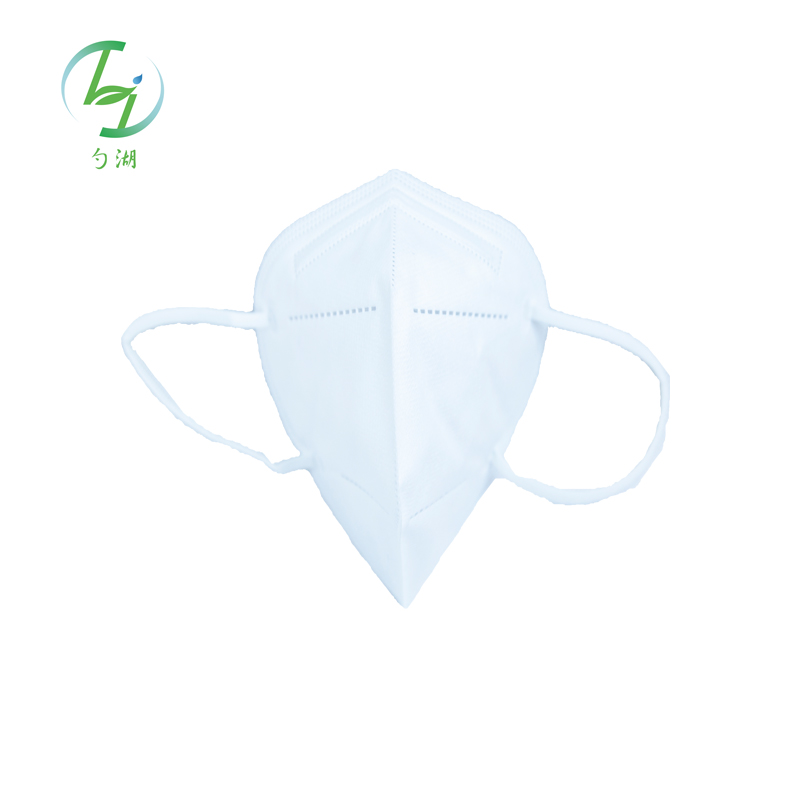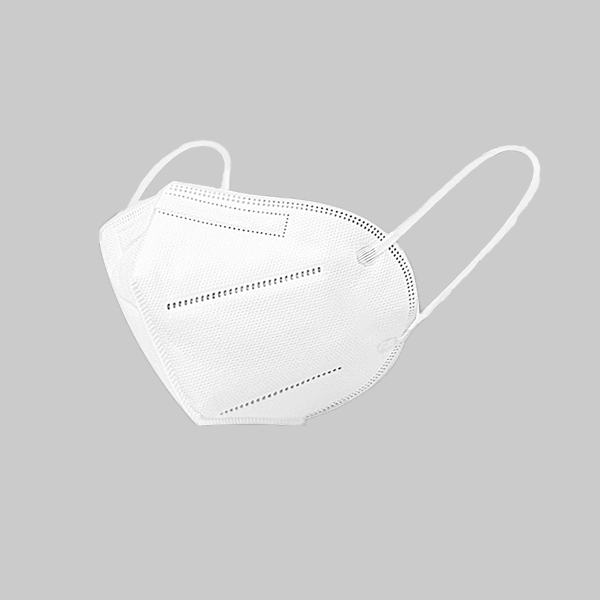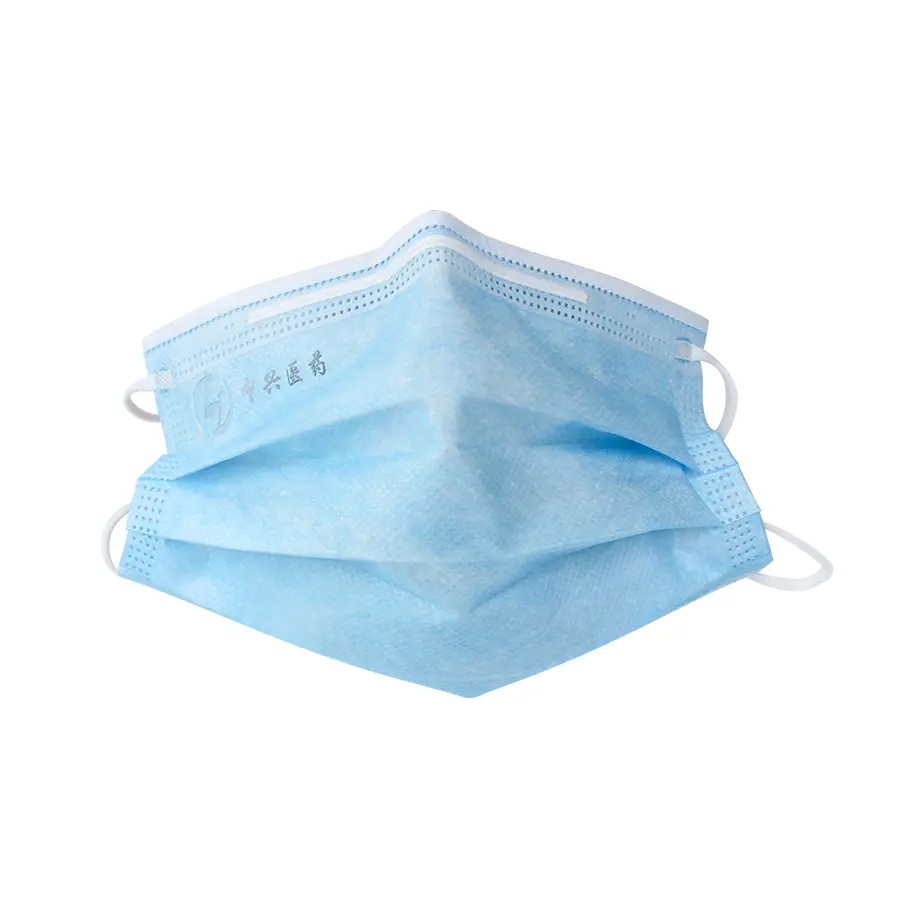As a procurement manager or medical supply distributor, you’re constantly navigating the fine line between cost-effectiveness and uncompromising safety. One question that frequently arises is whether you can extend the life of single-use products. Specifically, can you—and should you—reuse a disposable dust mask? The answer isn’t a simple yes or no. It involves understanding the mask’s design, the risks involved, and the official guidelines from health authorities. As a manufacturer with seven production lines dedicated to high-quality medical consumables, I, Allen, want to provide you with a clear, authoritative guide. This article will break down the science behind disposable masks, explore the factors that affect their lifespan, and offer practical advice to help you make informed decisions that protect your staff and your organization.
What Exactly Is a Disposable Dust Mask?
Before we can discuss reusing them, it’s essential to understand what these products are. A disposable dust mask, often referred to as a filtering facepiece respirator (FFR), is a form of personal protective equipment designed to protect the wearer from inhaling non-oil-based airborne particles. These can include dust from construction or cleaning, allergens, and some airborne pathogens. It’s a common piece of equipment in industries from healthcare and manufacturing to construction and woodworking.
The magic of a disposable mask lies in its construction. It’s not just a simple piece of fabric. These masks are made from multiple layers of non-woven polypropylene fabric. The inner layers provide structure and comfort, while the crucial middle layer acts as the filter. This filter works through a combination of mechanical filtering (trapping particles in a web of fibers) and, more importantly, electrostatic attraction. The fibers are given a static charge during manufacturing, which allows them to attract and capture very fine particles far more effectively than a simple mechanical barrier could. This is why a lightweight disposable mask can offer such high levels of respiratory protection.
It’s important to distinguish a dust mask or respirator from a standard medical surgical face mask. While they look similar, a surgical face mask is primarily designed to protect the environment from the wearer’s respiratory emissions (like in a sterile operating room). A disposable respirator, on the other hand, is designed to protect the wearer from the environment. They are tested for filtration efficiency and must form a tight seal to the face to be effective.

Why Are Most Dust Masks Labeled for Single Use?
When you see "single-use" or "disposable" on the packaging of a dust mask, it’s a directive from the manufacturer based on extensive testing and safety standards. There are three primary reasons why these masks are not intended for reuse.
-
Contamination Risk: The outer surface of a mask acts as a barrier, trapping dust, debris, and potentially harmful pathogens. When you handle a used mask, you risk transferring these contaminants to your hands, face, or other surfaces. If the mask is taken off and put back on, you could inadvertently expose yourself to the very hazards you were trying to avoid. In a hospital or clinic setting, this risk of cross-contamination is a major concern.
-
Degradation of Filter Efficiency: The electrostatic charge that makes the filter so effective is delicate. It can be neutralized by moisture, including the water vapor in your own breath. Over several hours of wear, this moisture begins to degrade the filter’s ability to capture particles. Physical handling, folding, or stuffing the mask in a pocket can also damage the fine fibers, further reducing its filtration capability. A reused mask may look fine, but it might not be providing the level of protection stated on its packaging.
-
Loss of Structural Integrity: A respirator is only effective if it forms a tight seal around the nose and mouth. The elastic straps, the soft foam nosepiece, and the shape of the face piece itself are all engineered for a secure fit and function. With each reuse, the straps stretch, the metal nose clip may lose its shape, and the body of the mask can become soft or deformed. A poor seal allows unfiltered air to leak in around the edges, rendering the high-tech filter useless.
Can You Reuse a Disposable Mask in Dusty Environments?
This is the core question for many professionals. The official and safest answer from manufacturers and regulatory bodies like the National Institute for Occupational Safety and Health (NIOSH) and the Occupational Safety and Health Administration (OSHA) is no. A disposable respirator should be discarded after each use, or at the end of a single work shift (typically 8 hours).
However, real-world situations can be nuanced. The term "use" itself can be subjective. Is wearing a mask for 10 minutes to walk through a mildly dusty area the same as wearing it for a full day of heavy-duty work? While the risk is lower in the first scenario, the core principles of degradation still apply. Every time the mask is donned and doffed, the straps stretch and the risk of contamination increases.
During public health emergencies, organizations like the CDC have issued guidance on extended use and limited reuse of respirators like the N95. It’s crucial to understand the distinction:
- Extended Use: Refers to wearing the same respirator for repeated encounters with multiple patients, without removing it. This is preferred over reuse.
- Reuse (or Re-use): Refers to using the same respirator for multiple encounters but removing it ("doffing") between each one. This is considered a higher-risk practice due to the potential for contact contamination.
This crisis-level guidance was never intended to become standard practice in a typical workplace. For procurement managers like Mark, adhering to the manufacturer’s single-use directive is the best way to ensure compliance and worker safety.

How Do Dust Levels and Environment Affect a Mask’s Lifespan?
The lifespan of a disposable mask is directly tied to its working environment. A mask worn in a low-particulate setting will last longer than one used in an environment with high dust levels. This concept is known as "filter loading."
Think of the filter like a sponge. As you breathe, it captures and holds airborne particles. In a very dusty environment, like a construction site or a grain silo, the filter becomes clogged with material captured much more quickly. This has two effects:
- Increased Breathing Resistance: As the filter loads up with particulate, it becomes more difficult for air to pass through. The wearer will notice that it’s getting hard to breathe. This is the most reliable physical indicator that the respirator has reached the end of its useful life and needs to be replaced with a new one.
- Reduced Airflow: Eventually, the resistance can become so high that it compromises the seal of the mask. If it’s harder to pull air through the filter than through a small gap at the edge of the mask, the wearer will start breathing in unfiltered air.
Therefore, a worker wearing a disposable mask while sanding drywall for 8 hours will need a replacement far sooner than someone wearing the same mask for light cleaning duties. The "one-shift" rule is a general guideline; in heavily contaminated areas, a mask may need to be replaced much more frequently.
What Happens to the Filter When You Reuse a Disposable Mask?
The integrity of the filter is the heart of the respirator‘s protective power. Reusing a disposable mask compromises this integrity in several ways. As we’ve touched on, the electrostatic charge is key. This charge actively pulls particles out of the air and traps them on the filter media.
"A significant portion of the filtration efficiency of N95 FFRs is contributed by the electrostatic charges on the filter media. When the FFR is decontaminated or used for an extended period, the charges on the filter media may dissipate, leading to a reduction in filtration efficiency." – National Library of Medicine study on N95 reuse
When you reuse a mask, two things happen to the filter. First, excessive moisture from your breath slowly but surely dissipates this crucial charge. The mask may still mechanically filter some larger particles, but its ability to capture the most dangerous fine particles drops significantly. Second, the filter becomes clogged. Even if you let a used mask air out, the particles it has already trapped are still there. Each subsequent use adds to the load, increasing breathing resistance and straining the fit and function of the mask. This is why reusing disposable masks is a gamble on safety.
As a manufacturer, we produce products like our Disposable Sterile Filter Mask with the expectation that its certified performance is for a single use. We cannot guarantee its effectiveness beyond that initial period because of these unavoidable degradation factors.

Are There Official Guidelines on Reusing a Disposable Face Mask?
Yes, and they overwhelmingly advise against it for routine use. The primary authorities on respiratory protection in the U.S. are OSHA and NIOSH.
- OSHA’s Respiratory Protection Standard (29 CFR 1910.134): This regulation mandates that employers provide workers with suitable respiratory protection. It states that disposable respirators should be discarded after use. The standard emphasizes that a respirator program must cover proper use, maintenance, and disposal.
- NIOSH: As the agency that tests and certifies respirators (like the N95), NIOSH is clear that filtering facepiece respirators are intended for single use. Their guidance on safe extended use or limited reuse was specifically for healthcare settings during severe shortages and came with strict protocols that are not practical for most other workplaces.
The CDC echoes this, stating: "Reuse of FFRs is often referred to as limited reuse. It was practiced as a crisis capacity strategy during the COVID-19 pandemic. However, it is no longer a recommended practice."
For a procurement professional like Mark, this is the bottom line. Adhering to these official guidelines is not just about safety; it’s about regulatory compliance. Using a disposable mask beyond its intended lifespan could open an organization to liability if a worker’s health is compromised.
What Are the Biggest Risks of Re-using Used Masks?
Let’s consolidate the dangers of reusing disposable masks into a clear list. Ignoring the single-use directive introduces significant and unnecessary risks that far outweigh any potential cost savings.
- Cross-Contamination: This is the most immediate danger. The outside of a used mask is a contaminated surface. Every time you touch it, you risk transferring dust or hazardous materials to your hands, and then to your eyes, nose, or mouth. Storing a used mask in a pocket or on a dashboard can also contaminate those surfaces.
- Reduced Protection: A reused mask is a compromised mask. The filter is less effective, the straps are looser, and the seal is likely broken. The wearer has a false sense of security, believing they are protected when they are breathing in harmful particles through a degraded filter or around the edges of the face piece.
- Infection and Illness: For those working in healthcare or public-facing roles, a reused mask can become a breeding ground for bacteria and viruses. The warm, moist environment inside a mask is ideal for microbial growth. Re-donning a mask that has been sitting for hours could introduce a concentrated dose of pathogens directly to your respiratory system.
- Compliance Violations: As mentioned, OSHA regulations are clear. Failing to provide adequate and properly maintained personal protective equipment can lead to significant fines and legal issues, especially if it results in a workplace illness or injury.
We supply a wide range of PPE, including high-quality isolation gowns, because we understand that safety is a system. A chain is only as strong as its weakest link, and a reused mask is a very weak link.
How Do You Know When It’s Time for a Disposal of Your Mask?
Clear communication and training are key to ensuring workers use their respirator correctly. Here is a simple checklist that should be followed. It’s time to dispose of your disposable mask and get a new one if any of the following are true:
| Condition | Action | Reason |
|---|---|---|
| Breathing becomes difficult | Dispose | The filter is clogged with particles, reducing airflow and straining the user. |
| The mask is dirty, wet, or visibly damaged | Dispose | Its integrity is compromised, and it may be a source of contamination. |
| The straps are stretched, torn, or loose | Dispose | The mask can no longer form a tight, protective seal on the face. |
| The nosepiece is damaged or no longer fits snugly | Dispose | A proper seal is impossible, allowing unfiltered air to leak in. |
| The mask was used around hazardous materials | Dispose | The risk of chemical contamination or trapped pathogens is too high. |
| An entire work shift (e.g., 8 hours) has passed | Dispose | This is the generally accepted maximum lifespan for a disposable respirator. |
This should be the standard operating procedure in any workplace that requires respiratory protection. There should be no ambiguity. When in doubt, throw it out.
Is There a Difference Between P100, N100, and Other Respirators for Reuse?
It’s easy to assume that a higher-rated respirator, like a P100 or N100, might be more suitable for reuse than a standard N95. While they do offer superior filtration, the same rules of degradation and contamination apply.
Let’s quickly demystify the NIOSH ratings:
- The Letter (
N,R,P): This indicates resistance to oil-based aerosols.Nseries are Not resistant to oil.Rare Resistant.Pare oil-Proof. - The Number (95, 99, 100): This is the minimum filtration efficiency.
95means it filters at least 95% of airborne particles.100(e.g., N100, P100) means it filters at least 99.97% of particles.
While a P100 mask has a more robust filter than an N95, it is still a disposable, single-wearer device. The straps will still stretch, the seal will still degrade with handling, and the outer surface will still become contaminated. The primary advantage of a P-series respirator is its durability in oily environments, not its suitability for reuse. An N100 respirator will clog just like an N95, and its electrostatic filter is also susceptible to moisture. The fundamental design principle remains the same: they are disposable masks or disposable respirators meant for a specified duration.
What’s the Proper Way to Handle a Mask If Considering Limited Reuse?
While standard practice is to forbid reuse, it’s important to acknowledge the crisis-level guidance provided by the CDC for extreme circumstances. If, and only if, an organization is facing a critical shortage and has no other option, limited re-use must be done with extreme care. This advice should not be interpreted as an endorsement for regular reuse.
Here are the critical steps for such a scenario:
- Single-Wearer Use Only: A respirator must never be shared between people.
- Minimize Touching: Handle the mask only by its straps or ties. Never touch the front of the respirator.
- Proper Storage: Store the mask in a clean, breathable container, like a paper bag, clearly labeled with the wearer’s name. Do not store it in a sealed plastic bag, as this traps moisture.
- Hand Hygiene: Always wash hands with soap and water or use an alcohol-based hand sanitizer before and after handling the mask.
- Visual Inspection: Before each re-use, carefully inspect the mask for any signs of damage, dirt, or moisture. If it is compromised in any way, it must be discarded.
- Limit the Number of Reuses: The CDC suggested a maximum of five reuses under crisis conditions, but this depends on a number of factors and is not a hard rule.
This process is cumbersome and carries inherent risks. For any organization with a stable supply chain, sourcing sufficient quantities of disposable masks and enforcing a single-use policy is by far the safer, more compliant, and more responsible choice.
Key Takeaways to Remember
To make the best decision for your organization, keep these essential points in mind:
- Designed for Single Use: Disposable dust masks and respirators are engineered and certified for a single period of use. Their effectiveness is not guaranteed beyond that.
- Reuse Creates Risks: Reusing a disposable mask significantly increases the danger of contamination, reduces filtration efficiency, and compromises the all-important facial seal.
- Follow Official Guidelines: OSHA and NIOSH regulations prohibit the routine reuse of disposable respirators in the workplace. Adherence is a matter of both safety and legal compliance.
- When in Doubt, Throw It Out: A mask should be immediately discarded if it is dirty, damaged, wet, or becomes difficult to breathe through.
- Quality Over Perceived Savings: The cost of a new mask is minuscule compared to the potential cost of a workplace illness, an outbreak, or a compliance violation. Partner with a reliable manufacturer who provides high-quality, certified products.
As a direct manufacturer, my priority is providing my partners like you, Mark, with products that you can trust to perform as promised. Making the right choice about PPE isn’t just a procurement decision; it’s a commitment to the health and safety of every person who relies on it.
Post time: Jul-07-2025





